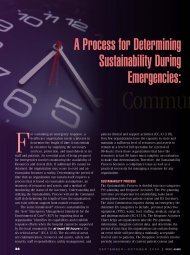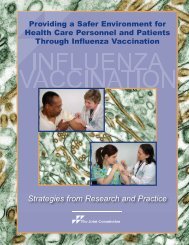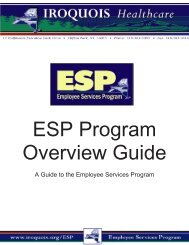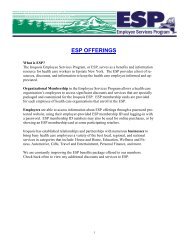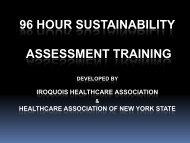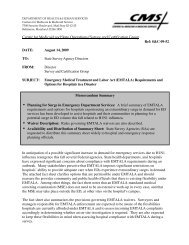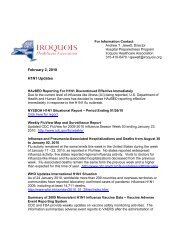NYS Public Health Legal Manual: A Guide for Judges, Attorneys ...
NYS Public Health Legal Manual: A Guide for Judges, Attorneys ...
NYS Public Health Legal Manual: A Guide for Judges, Attorneys ...
You also want an ePaper? Increase the reach of your titles
YUMPU automatically turns print PDFs into web optimized ePapers that Google loves.
NEW YORK STATE PUBLIC HEALTH LEGAL MANUAL § 1.100<br />
Law § 20(2)(a), the chief executive of the locality is authorized to<br />
“proclaim a local state of emergency.” Exec. Law § 24(1). Once having<br />
done so, local authorities may establish curfews, quarantine<br />
wide areas, close businesses, restrict public assemblies and, under<br />
certain circumstances, suspend local ordinances. However, in the<br />
absence of the proclamation of a “local state of emergency,” the<br />
existing statutory and common law police powers include most of<br />
the same powers that could be activated by the state-of-emergency<br />
declaration (except the suspension of laws). The distinction between<br />
the exercise of statutory and common law police powers and the<br />
exercise of statutory emergency powers is a matter of degree, with<br />
the declaration of a local state of emergency addressing responses to<br />
conditions that are “widespread or severe.”<br />
Where the Governor has made a finding that “local governments are<br />
unable to respond adequately” to a disaster, the Governor may declare<br />
a “disaster emergency” by executive order. Exec. Law § 28(1).<br />
Since the statutory scheme <strong>for</strong> responding to public health concerns<br />
places that response primarily in local authorities, it is unlikely that<br />
the State would take direct action in a public health crisis without a<br />
governor’s order declaring a disaster emergency, unless the source of<br />
the crisis is identifiable and specific enough to be addressed by the<br />
issuance of an order of the State Commissioner of <strong>Health</strong> under PHL<br />
§ 16.<br />
One consequence of the issuing of a declaration of emergency on<br />
either the state or local level is that it can set into motion statutory<br />
provisions relating to the use of disaster emergency response personnel<br />
to meet the emergency. These “disaster emergency response personnel”<br />
are the replacements of the “civil defense <strong>for</strong>ces” that were<br />
created pursuant to the State Defense Emergency Act, which was<br />
enacted in 1951 as a product of the “Cold War” to facilitate state and<br />
local responses in an enemy “attack.” The SDEA does not apply to<br />
naturally occurring outbreaks of disease. While the SDEA remains<br />
in place to address enemy attacks, it has <strong>for</strong> the most part been subsumed<br />
by the Executive Law emergency response provisions that<br />
cover all emergencies, including attacks. See In re World Trade Cen-<br />
53




